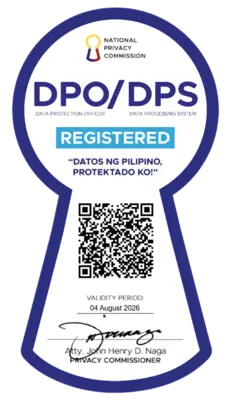Flashlight and net: How detecting COVID-19 variants helps in pandemic response
South Africa detected the Omicron variant just before November ended and sounded the alarm for the rest of the world.
Why is it important to know the COVID-19 variants spreading in a community?
In an episode of "Need to Know," health systems specialist Dr. Albert Domingo said detecting the variants is like having a flashlight and using a net to catch fish.
"Parang flashlight iyan. Imbes na ikaw ay nangangapa sa isang madilim na kuwarto, pagka mayro'n kang maayos na genomic surveillance system, pag binuksan mo 'yung flashlight, 'Aha! Huli ka. Ikaw pala 'yung magnanakaw. Ikaw pala 'yung pumapasok sa loob ng bahay ko. Ikaw pala 'yung akyat-bahay,'" he said.
"Baka 'yun pala, dumadaan sa bintanang ito 'yung magnanakaw," he added. "Therefore, pwede mong sarhan 'yung bintana na iyon. Iyon 'yung quarantine measures, saka mag-a-isolate and all."
Variants emerge when there is a mutation in the virus and these can be determined through genome sequencing. Among the concerns about new variants is their ability to evade vaccines, the severity of illness they can cause, and their rate of transmissibility.
The Philippines can conduct genomic surveillance through the Philippine Genome Center.
"The Philippine Genome Center was an investment of the Department of Science and Technology back in 2013. Imagine if we did not invest in 2013, we'd have nothing today," said Undersecretary Rowena Guevara.
The PGC discovered the COVID-19 variant P.3 or Theta back in March. It was detected from a sample that was taken from Central Visayas.
"Na-demonstrate ng ating kababayan, ng kapwa-Pilipino natin na kaya nating gawin. Huwag naman sana tayong maka-detect ng something na delikado, pero we can do it," Domingo said.
While Philippines have the ability to detect new variants, Domingo said there is room for improvement.
"Puwede pa sanang bilisan. Ang tanong, ilang araw na ang nakalipas, at 'yun ba kanilang mga sample na sinasabi, 'yung nakuha sa kanilang ilong at sa kanilang bibig, na-sequence na ba?" he said.
"Kasi isang bagay kung mayro'n tayong sequencing, kung mayro'n tayong Philippine Genome Center," he added. "It's another thing kung mabilis nating magagawa para malabas natin 'yung information agad."
Aside from the speed, Dr. Domingo said experts should know the best place to get the samples.
"Nakita natin na kung talaga palang nagte-test tayo, parang lambat sa ating mga mangingisda. Kapag 'yung lambat mo, hindi ka bato lang nang bato ng lambat, mayro'n kang idea, nasaan kaya ang mga isda?" he said.
"Tapos 'yung lambat mo, dapat malaki. Dapat, 'yung butas ng lambat mo, tama, iiitsa mo 'yung lambat mo doon in the hope na makahuli ka. Ganoon ang genomic surveillance," he added.
Meanwhile, South Africa has given more than 25,000 genomic sequences to GISAID, a global repository of genomic data for viruses that was started in 2008.
How does South Africa detect new variants? According to Domingo, their experts are united for the unified genomic surveillance.
"Kahit sila ay hirap doon sa kanilang resources, nagawan nila ng paraan," Dr. Domingo said.
The network for genomic surveillance in South Africa was launched in June 2020 to unify their COVID-19 surveillance.
In October 2020, they first detected Variant B.1351 also known as Beta, which was named by the World Health Organization mid December 2020.
In May, the country detected another highly mutated variant which is the C.1.2 and is currently under monitoring.
"Mayro'n silang mga partnership in existing public and private, na-link together nila existing laboratories and they also have academic institutions, very strong academic institutions, scientists," Domingo said.
—Jannielyn Bigtas/MGP, GMA News




